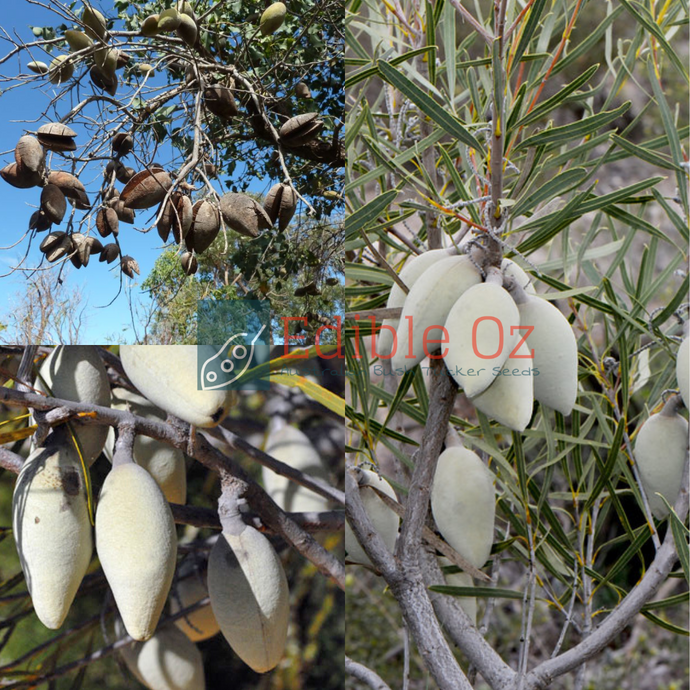
Sandplain Woody Pear (Xylomelum angustifolium) seeds
Regular price
$4.95
Sale
or make 4 interest-free payments of
$1.23 fortnightly with
 More info
More info
SANDPLAIN WOODY PEAR (Xylomelum angustifolium)
Quick Facts
- Common Name: Sandplain Woody Pear
- Botanical Name: Xylomelum angustifolium
- Height: Typically 2–7 meters; can reach up to 10 meters
- Flower Color: White to cream
- Flowering Season: Spring to early summer
- Exposure: Full sun
- Soil: Well-drained, sandy soils
- Irrigation: Drought-tolerant once established
- Frost Tolerance: Moderately frost tolerant to -4°C (25°F)
Why Grow Sandplain Woody Pear?
- Drought-Hardy: Perfect for waterwise gardens.
- Attractive Features: Beautiful cream-white flowers and striking woody fruits make it a standout ornamental plant.
- Native Heritage: This endemic species is adapted to Western Australia's challenging conditions.
Bush Food Note
- Seeds: The seeds are edible and considered a delicacy. Best enjoyed raw or roasted once the fruit has dried and the winged seed pod is released.
- Traditional Significance: The Nanda people of Western Australia valued the woody pear as a staple food source.
Other Uses
- Ornamental Value: Woody fruits are prized in the cut flower industry for their unique aesthetic appeal.
How to Grow
Sowing Instructions:
-
Pre-Treatment:
- Pour hot water over seeds and soak for 24 hours to enhance germination success.
-
Sowing Season:
- Sow all year round, though autumn and spring are preferred.
-
Depth:
- Cover seeds lightly with a substrate.
Planting Medium:
- Use coir or sowing mix mixed with sand or perlite for good drainage.
Care Tips:
- Temperature: Maintain a warm germination temperature of 25°C or higher.
- Moisture: Keep soil consistently moist but not wet.
- Location: Place in a bright spot with ample sunlight.
Order Now
Add the Sandplain Woody Pear to your garden for a striking native feature. Its drought-hardiness, edible seeds, and unique ornamental value make it a must-have for native plant enthusiasts and eco-conscious gardeners.
